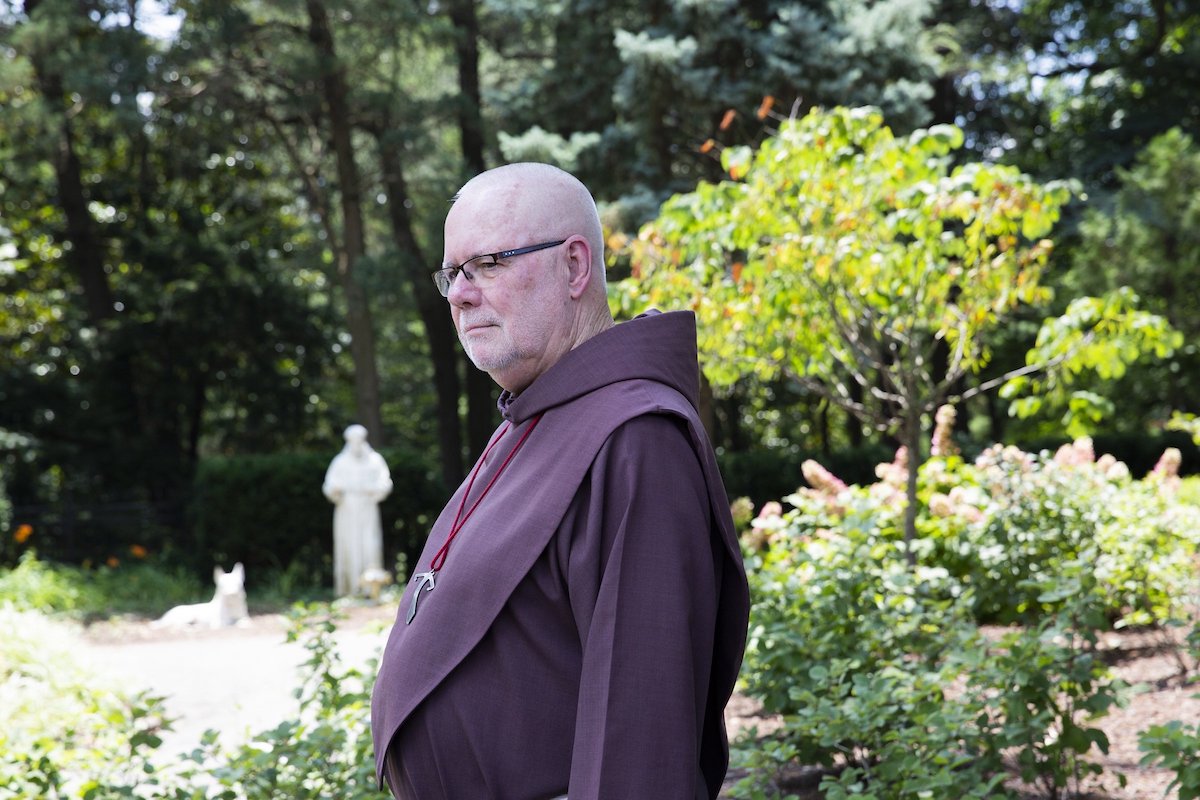MASSEY, Md. (CNS) — Franciscan Father Jim Gardiner told those gathered Jan. 23 at an Episcopal church in Massey that they should have “no doubt” that “the unity of Christians is an attainable and worthy goal.”
One reason to have no doubt is where they gathered for a prayer service during the Week of Prayer for Christian Unity: St. Clement’s Episcopal Church.
It is the home parish church of Father Paul Wattson, who helped developed the week of unity, traditionally observed Jan. 18-25.
Born Jan. 16, 1863, in Millington, Maryland, he was baptized at the church and, later as an Episcopal priest, he was its pastor, as was his father before him. He was later received into the Catholic Church and is a candidate for sainthood.
Bishop Santosh Marray of the Episcopal Diocese of Easton on Maryland’s Eastern Shore was the presider at the service. Father Gardiner proclaimed the Gospel and delivered the sermon.
“Did not Christ himself pray for unity at the Last Supper when, as St. John remembers, he prayed ‘that all may be one … that the world may believe,'” said the priest, a Franciscan Friar of the Atonement, who has long been involved in ecumenical and interfaith efforts.
“And was not Father Paul Wattson convinced that that ‘prayer of Jesus Christ has got to be answered,'” he said. “Just how it will be answered, however, might in large measure, it seems to me, to be up to us.”
Father Gardiner, director of special projects at the Franciscan Monastery of the Holy Land in Washington, expressed concern over an “ecumenical inertia” today, saying it is “an issue that’s got to be faced.”
“It’s a Gospel issue,” he added, referencing again the verse “that all may be one.” (John 17:21)
He praised St. Clement’s lay pastor, Mark Hansen, and “this congregation for continuing to recognize the importance of this issue and for not allowing history — especially history that was nurtured here — to simply be relegated to the past.”
Father Gardiner gave a quick overview of the many church documents on ecumenism and interfaith relations, including the Second Vatican Council’s Decree on Ecumenism (“Unitatis Redintegratio”), which said that ecumenism should be everyone’s concern and that genuine ecumenism involves a continual personal and institutional renewal.
Next came, in 1965, the Declaration on the Relationship of the Church to Non-Christian Religions (“Nostra Aetate”).
After these documents were promulgated, “there was great ecumenical ferment as we trooped and snooped through one another’s sacristies and sanctuaries; and there was a kind of ecumenical euphoria that set in” in the United States and around the globe, Father Gardiner said.
“This bore much fruit, seen in local, national and international dialogues, he said, listing other major documents, including the Catholic Church’s “Joint Declaration on the Doctrine of Justification” with the Lutheran World Federation in 1999, providing a common basis for understanding how people are justified and saved.
“Why don’t we hear more about these statements? It’s a good question,” he said, adding that he thinks this question prompted Pope Francis to endorse an April 2020 document from the Pontifical Council for Promoting Christian Unity titled “The Bishop and Christian Unity,” an ecumenical vademecum.
It’s “a ‘companion’ of sorts that was offered as an aid to diocesan bishops to help them better understand and fulfill their ecumenical responsibility,” Father Gardiner said.
He said he was not blaming bishops — “not ours, yours or anyone else’s for that matter” — for this “ecumenical inertia.” “It’s everybody’s problem.”
Father Gardiner noted “it was not the first time –– thanks to Dr. Mark Hansen — that I’ve had the privilege of standing at this ambo” in St. Clement’s “and proclaiming God’s word from the Wattson family Bible. A couple of years ago — obviously pre-COVID — I was afforded the same honor.”
“I knew I’d be among friends, so I wasn’t intimidated so much as I was awed”, he said, because “both Father Paul Wattson, whom your forebears knew as (the) Rev. Lewis Thomas Wattson, and his father before him had both been your pastors.”
The Week of Prayer began as an octave of prayer, sermons and conferences encouraged by Pope Leo XIII and Anglican leaders.
Father Wattson and Mother Lurana White, Episcopal co-founders of the Society of the Atonement, celebrated the event for the first time in January 1908 at Graymoor, the headquarters of the Franciscan Friars and Sisters of the Atonement in Garrison, New York.
In 1909, the friars and the sisters and 13 of their lay associates were received into the Catholic Church. The Atonement priests, sisters and brothers work for reconciliation and healing through the unity of men and women with God and one another, in fulfillment of the mandate from the Gospel of St. John: “that they all may be one.”






